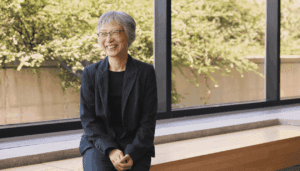By University of Ottawa

Professor Bao, a world-renowned physicist and Canada Research Chair in Fiber Optics and Photonics, has transformed how we monitor the health of critical infrastructure. Her breakthrough? Turning ordinary optical fibers — those thin strands of glass that carry internet signals — into ultra-sensitive sensors that can detect stress, temperature, and acoustic and vibrational wave changes to even the tiniest variations in amplitude and frequency.
These “smart fibers” are now embedded in bridges, pipelines, railways, power generators, and even aircraft, silently watching for signs of trouble. They can detect invisible cracks before they become catastrophic failures, helping to prevent oil spills, structural collapses and costly shutdowns. Her technology is already saving governments millions in maintenance, and most importantly, saving lives.
Bao’s innovations go beyond engineering: her distributed acoustic sensor (DAS) system can monitor ocean waves to provide early warning of natural disasters. It’s a leap forward in environmental protection and public safety.
Her work exemplifies the spirit of the NSERC Donna Strickland Prize, which honours research that delivers exceptional benefits to society. Bao’s fiber optic sensors are a perfect fit: they’re scalable, cost-effective and already in use around the world. Her research has led to eight technologies transferred to companies in Canada, the US, and Japan, and she holds more than 10 patents.
A trailblazer in her field, Professor Bao is also a role model for women in science. She’s the first woman to win three Canadian Association of Physicists medals for Outstanding Achievement and was featured in the International Society for Optics and Photonics “Women in Optics” calendar.
Her story is one of perseverance, innovation and impact. By transforming breakthroughs in the lab into solutions for real world problems, Xiaoyi Bao is helping to build a safer, smarter future for all Canadians.